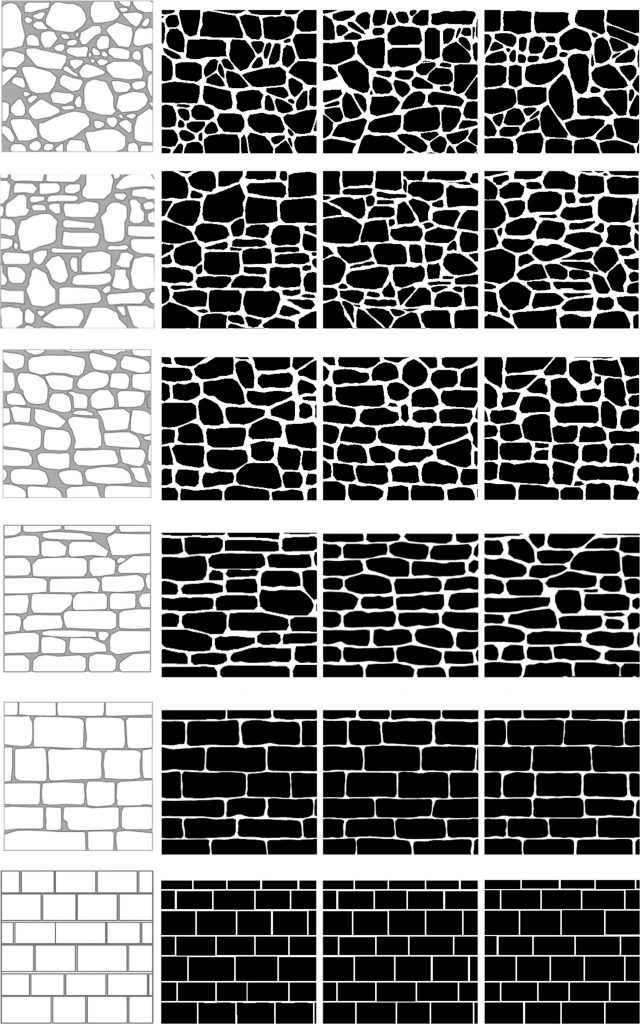Numerical simulation of stone masonry
The force-displacement response of stone masonry panels depends on the material properties of the constituents and the stone pattern. To investigate the influence of these parameters, we developed, in collaboration with Prof. Jean-François Molinari (LSMS, EPFL), advanced numerical models that use extrinsic cohesive zone models to simulate dynamic crack propagation in the stone masonry panels. In this method, cracks are detected and inserted dynamically during the simulation. We apply the extrinsic traction separation law developed by Snozzi and Molinari, where two separate fracture energies in mode I and mode II are considered. A contact and friction algorithm is added to the original model to consider the shear and compression behavior, which plays an important role in the force transfer mechanism of masonry structures. The model is implemented in the open-source software Akantu (LSMS, EPFL).

- Article:
- Micro-mechanical finite element modeling of diagonal compression test for historical stone masonry structure [journal link]
- Numerical evaluation of test setups for determining the shear strength of masonry [journal link]
- Numerical investigation of the role of masonry typology on shear strength [journal link]
- Funding: Swiss National Science Foundation
- Collaboration: Prof. Jean-François Molinari (LSMS, EPFL)
A 2D typology generator for historical masonry elements
The behavior of stone masonry is influenced by both the properties of its constituents (stone units and mortar joints) and their arrangement. While the impact of the strength of individual components on masonry has been extensively explored, the effect of masonry typology remains under-researched, largely due to the challenges in altering the masonry layout in a controlled manner. This study presents a novel approach to generate and calibrate various masonry typologies, laying the groundwork for advanced numerical analyses. We introduce a 2D typology generator for stone masonry elements. Additionally, we propose a novel, objective methodology to determine the line of minimum trace in stone masonry images, utilizing graph theory.

- Article:
- A 2D typology generator for historical masonry elements [journal link]
- Source code: [source code link]
- Funding: Swiss National Science Foundation